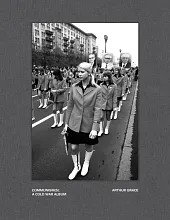Communism(s): A Cold War Album
Communism(s): A Cold War Album
Opis publikacji
For most people in the West, the realities of life behind the Iron Curtain have faded into caricatures of police state repression and bread lines. With the world seemingly again divided between democracies and authoritarian regimes, it is essential that we understand the reality of life in the Soviet Bloc. American photojournalist Arthur Grace (born 1947) was uniquely placed to provide that context. During the 1970s and 1980s Grace traveled extensively behind the Iron Curtain, working primarily for news magazines. One of only a small corps of Western photographers with ongoing access, he was able to delve into the most ordinary corners of people's daily lives, while also covering significant events. Many of the photographs in this remarkable book are effectively psychological portraits that leave the viewer with a sense of the gamut of emotions in that era. Illustrated with over 120 black-and-white images-nearly all previously unpublished-Communism(s) gives an unp...
For most people in the West, the realities of life behind the Iron Curtain have faded into caricatures of police state repression and bread lines. With the world seemingly again divided between democracies and authoritarian regimes, it is essential that we understand the reality of life in the Soviet Bloc. American photojournalist Arthur Grace (born 1947) was uniquely placed to provide that context.During the 1970s and 1980s Grace traveled extensively behind the Iron Curtain, working primarily for news magazines. One of only a small corps of Western photographers with ongoing access, he was able to delve into the most ordinary corners of people's daily lives, while also covering significant events. Many of the photographs in this remarkable book are effectively psychological portraits that leave the viewer with a sense of the gamut of emotions in that era.Illustrated with over 120 black-and-white images-nearly all previously unpublished-Communism(s) gives an unprecedented glimpse behind the veil of a not-so-distant time filled with harsh realities unseen by nearly all but those that lived through it. Shot in the USSR, Poland, Romania, Yugoslavia and the German Democratic Republic, here are portraits of factory workers, farmers, churchgoers, vacationers and loitering teens juxtaposed with the GDR's imposing Social Realist-designed apartment blocks, annual May Day Parades, Poland's Solidarity movement (and the subsequent imposition of martial law) and the vastness of Moscow's Red Square.


